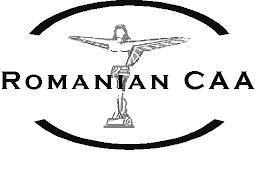Currently, RCAA is in the process of acquiring a new Beechcraft King Air 350i calibration aircraft. This aircraft will replace the previous Beechcraft King Air 350 „Colorici”. The new aircraft has cutting-edge Proline Fusion glass-cockpit avionics suite. The system integrates all flight and navigation information on three touchscreen displays, significantly improving crew efficiency and flight safety. The new aircraft has two Pratt & Whitney PT6A-60A turboprop engines, providing 1050 HP each. The maximum cruise speed is 578 km/h and the maximum operational ceiling is 10600 m. It has a maximum takeoff weight of 6.8 tons and a range of approximately 3300 km. It has a UNIFIS 3000 AFIS (Automatic Flight Inspection System), allowing highly accurate inspection and verification of not only fixed navigation aids, but also GPS/GNSS signals.
Passenger aircraft as well as other categories (utility, search and rescue, training, etc.) – use fixed navigation aids. This includes enroute and terminal area navigation. Usually, these navigation aids use radiofrequency signals, which can be subject to interference or jamming, either due to external factors or due to wear or de-calibration. It is imperative, especially for ILS systems used for terminal guidance to the runway in inclement weather, that they be in good working order. Consider the consequences of an improperly calibrated ILS system, that would guide the landing aircraft outside the runway centerline or under the correct glideslope, risking obstacle impact.
The Navaids Flight Inspection Department has the mission of performing flight inspections and Navaid surveillance for fixed ground-based navigation aids (VOR, ILS, DME, PAPI, etc.), to determine their accuracy. Usually, SSVZM’s activity is tightly coordinated with ROMATSA / airport ground-based technical teams. If, during an inspection, it is determined that a Navaid is not working correctly, the ground teams remedy the situation in real time, being coordinated by the calibration aircraft. In case the ground teams are unable to remedy the situation during the calibration flight, the repairs are done later and the respective Navaid is suspended and placed back into service only after another calibration flight is satisfactorily completed.
The aircraft and automatic flight inspection system (AFIS) also has the capability to perform inspections for conventional flight procedures and for procedures based on global satellite navigation system (GNSS).
To authorize newly installed NavAids, the Navaids Flight Inspection Department performs extended testing in order to adjust the new equipment's parameters, as a prerequisite to obtain the necessary precision for flight safety.
Up to now, the Navaids Flight Inspection Department operated the old calibration airplane YR-CAA „Colorici”, so far flying over 11.000 flight hours over a period of 20 years. Most of these hours have been spent on ILS flight inspection missions, requiring repeated approaches followed by go-arounds. In aviation, operations with repeated go-around procedures have a higher risk of accident than normal operations, due to the fact that the airplane is more exposed to critical flight phases (approach and go-around), as well as low-altitude flight (risks of bird strikes, obstacles etc.), occurring much more often than on other types of flights.
In the past, AACR has performed flight inspection missions using an AN-24 airplane, registration YR-BMK. It was tragically lost with all its crew, during a flight inspection mission, on the 22nd of February 1996, at Baia Mare.
|
|
|
